He didn’t become a millionaire without having a philosophy of business. That philosophy apparently was “Give the people a place to stay in the here-and-now, a place to stay in the hereafter, and, in between, a place to buy some fresh veggies.”
A corollary to that philosophy was “Anything worth doing once is worth doing three times.”
So, he built housing additions in Fort Worth, Tulsa, and Oklahoma City.
He built Rose Hill cemeteries in Fort Worth, Tulsa, and Oklahoma City.
And he built public market buildings in Fort Worth, Tulsa, and Oklahoma City.
In the Here-and-Now
John James Harden was born in Michigan in 1883. By 1906 he was in Oklahoma City. He began to buy land and to develop housing additions in Oklahoma City and several other towns in the state. By the 1930s he owned two paving companies and paved many of Oklahoma City’s streets and many of the state’s highways.
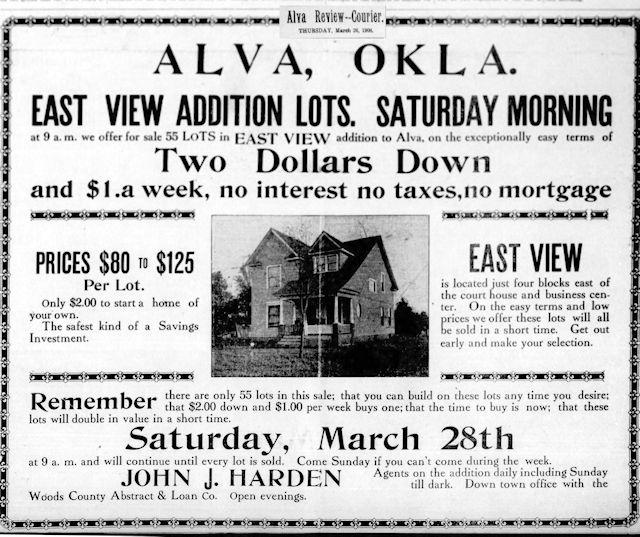 In 1908 Harden developed one of his first additions just outside the town of Alva, Oklahoma. It was common for developers to develop unincorporated land and boast that such property was not subject to city taxes. Of course, such land also was not served by tax-financed municipal utilities.
In 1908 Harden developed one of his first additions just outside the town of Alva, Oklahoma. It was common for developers to develop unincorporated land and boast that such property was not subject to city taxes. Of course, such land also was not served by tax-financed municipal utilities.
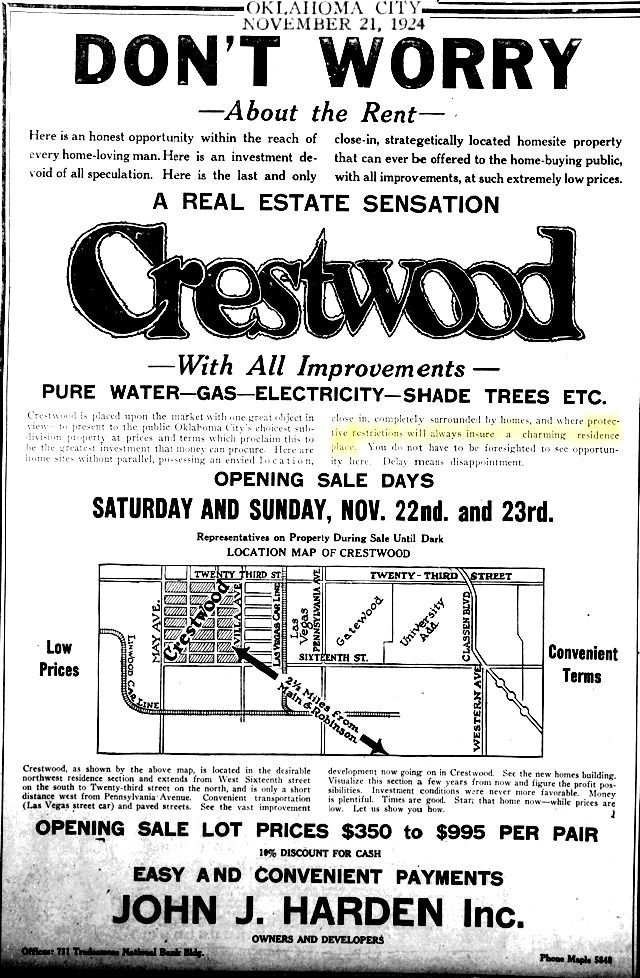 In 1924 Harden developed the Crestonwood addition in Oklahoma City. Note the term restrictions. The terms restricted and restrictions in real estate ads of the first half of the twentieth century are tricky. The terms could refer to minimums imposed for a structure’s size or its building materials. But the terms also could be code words for “sales restricted to white people.”
In 1924 Harden developed the Crestonwood addition in Oklahoma City. Note the term restrictions. The terms restricted and restrictions in real estate ads of the first half of the twentieth century are tricky. The terms could refer to minimums imposed for a structure’s size or its building materials. But the terms also could be code words for “sales restricted to white people.”
 Real estate sellers had imposed racial restrictions before, and not all sellers bothered with code words. These ads are for the Englewood Heights and Beacon Hill additions on the East Side.
Real estate sellers had imposed racial restrictions before, and not all sellers bothered with code words. These ads are for the Englewood Heights and Beacon Hill additions on the East Side.
In 1926 the U.S. Supreme Court validated racially restrictive housing covenants in its ruling in Corrigan v. Buckley.
But in 1948 the U.S. Supreme Court backtracked in Shelley v. Kraemer, invalidating racially restrictive housing covenants.
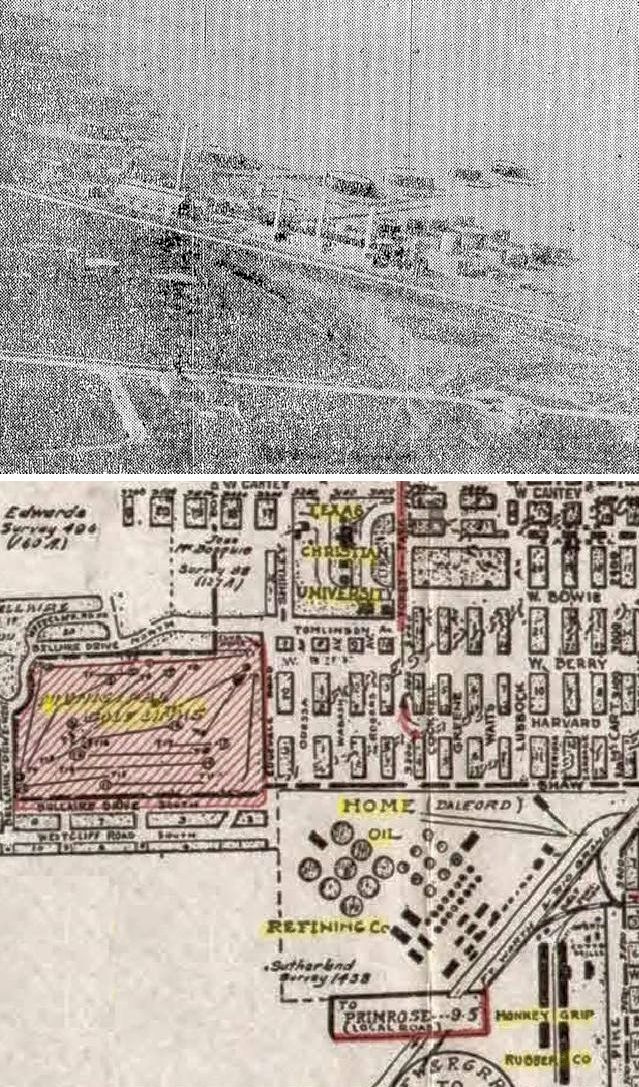 Millionaires like John James Harden become millionaires by being able to see what could be, not just what is. Who could look at the smoke stacks and storage tanks of Home Oil Refining Company’s refinery on the edge of Fort Worth and see . . .
Millionaires like John James Harden become millionaires by being able to see what could be, not just what is. Who could look at the smoke stacks and storage tanks of Home Oil Refining Company’s refinery on the edge of Fort Worth and see . . .
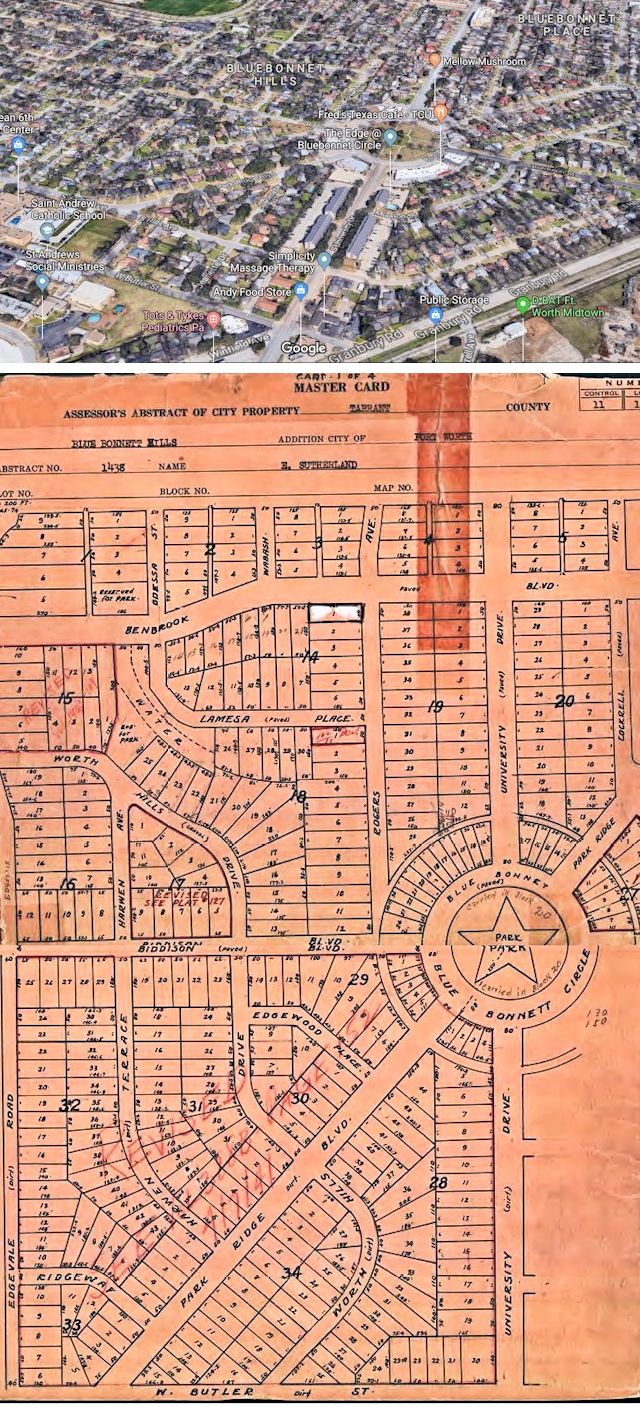 the Bluebonnet Hills addition, with its streets of comfortable homes radiating out from the town’s first traffic circle?
the Bluebonnet Hills addition, with its streets of comfortable homes radiating out from the town’s first traffic circle?
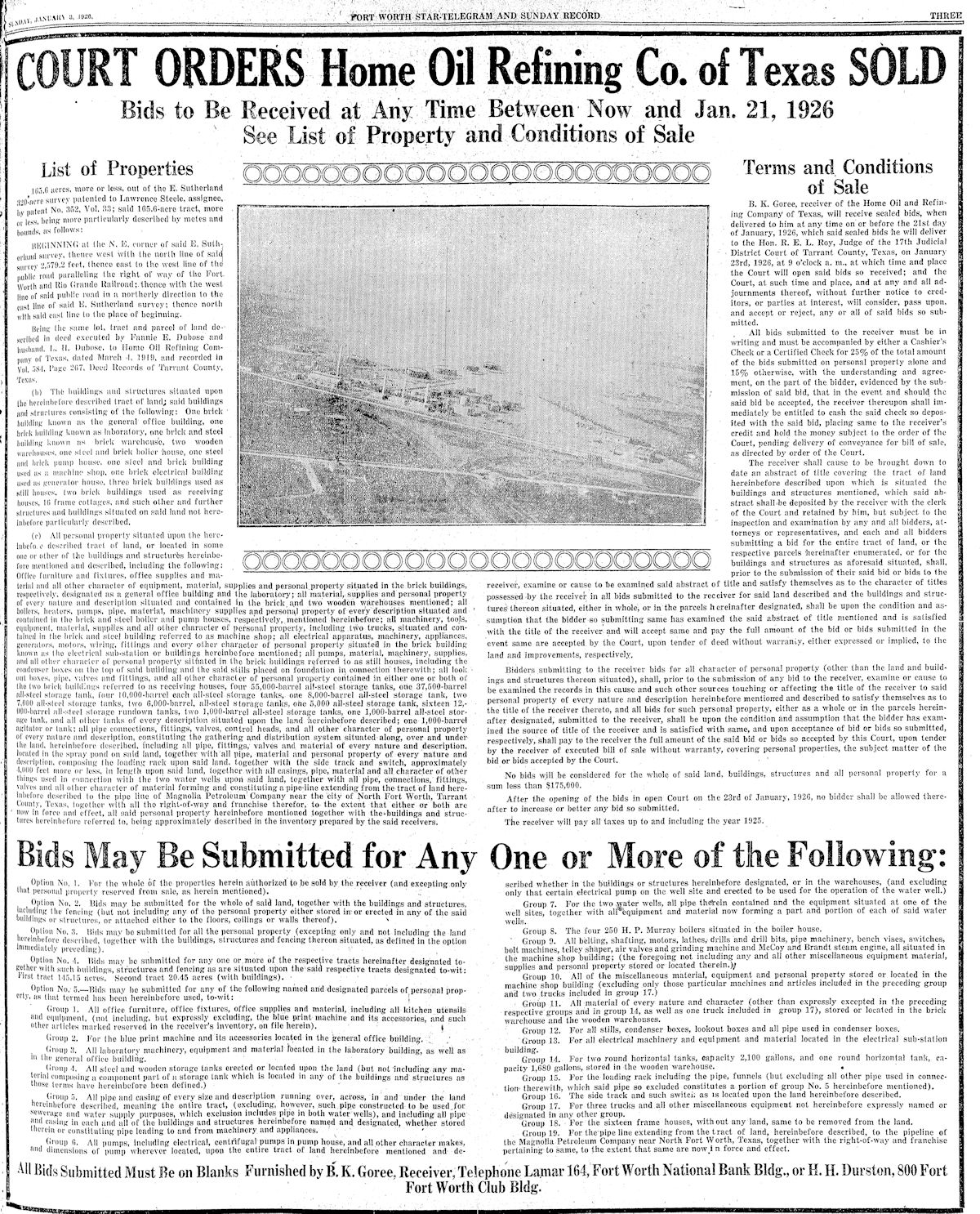 But that’s just what Harden and his partners saw.
But that’s just what Harden and his partners saw.
Home Oil Refining Company had been chartered in 1916 and built a refinery on 168 acres between Monkey Grip Rubber Company (in the old Texan auto plant and Worth Hills golf course. But the company was plagued by financial trouble almost from the beginning. Finally in 1926 the company went into receivership, and in 1927 the refinery was sold, lock, stock, and storage tanks.

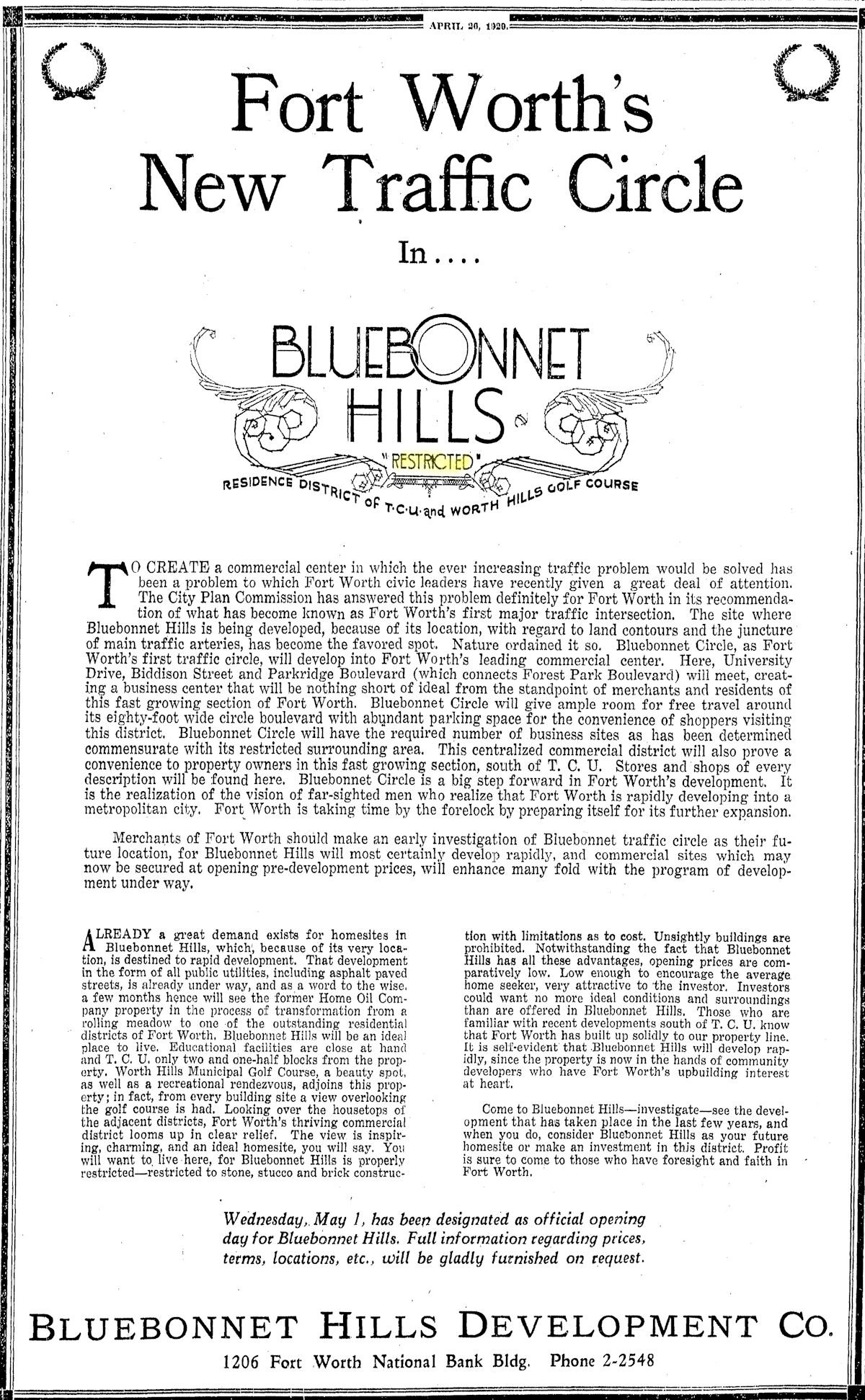 John James Harden et al. bought the refinery property and in 1929 began promoting the “restricted” addition of Bluebonnet Hills just two and a half blocks from the end of the TCU streetcar line.
John James Harden et al. bought the refinery property and in 1929 began promoting the “restricted” addition of Bluebonnet Hills just two and a half blocks from the end of the TCU streetcar line.
 The model home for Bluebonnet Hills hints at a prominent architectural feature of many of the first houses built there: gables.
The model home for Bluebonnet Hills hints at a prominent architectural feature of many of the first houses built there: gables.
For example:
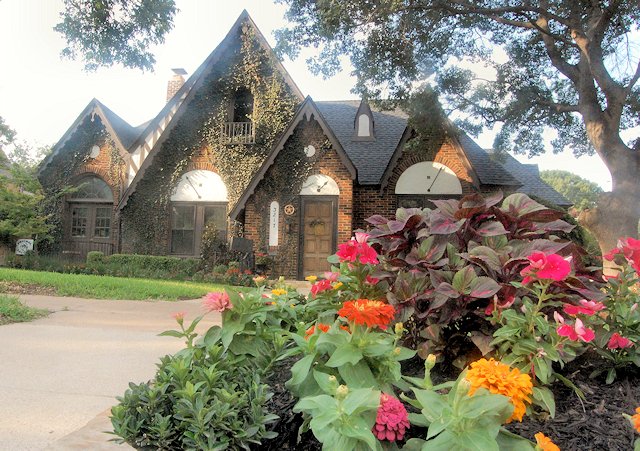
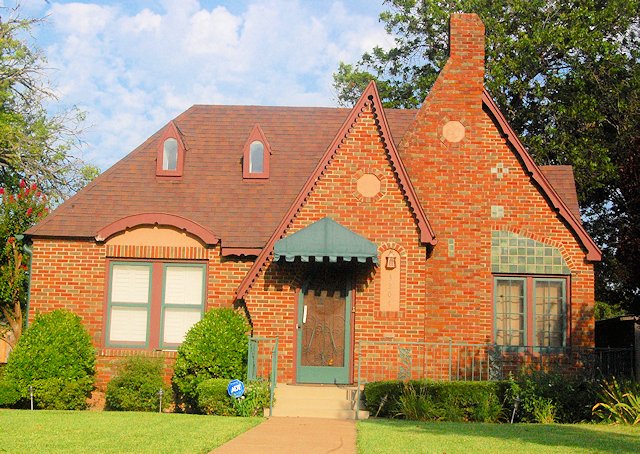
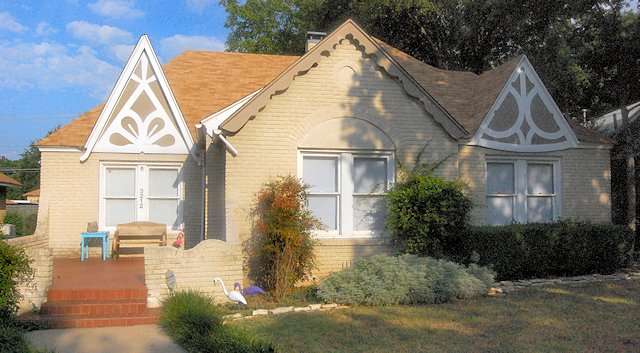
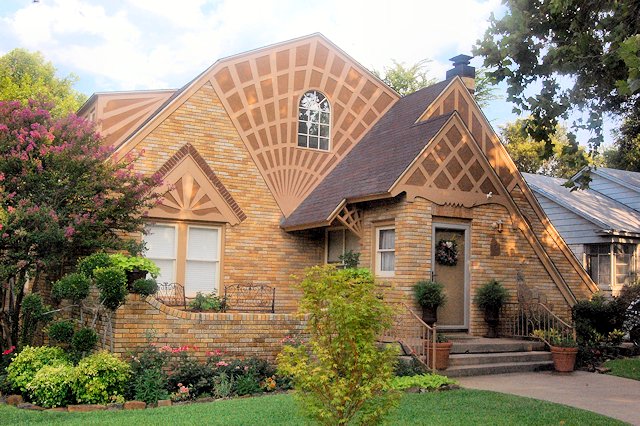
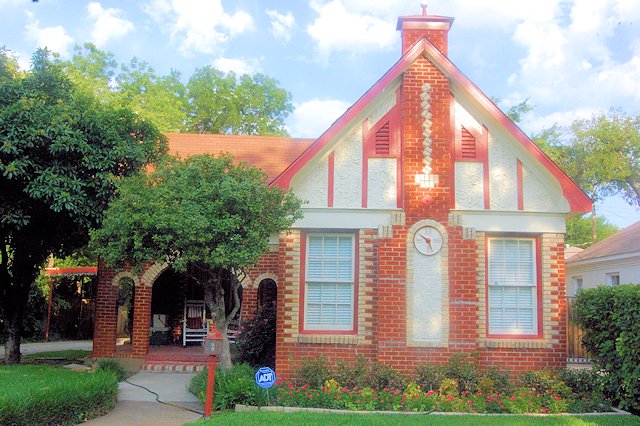
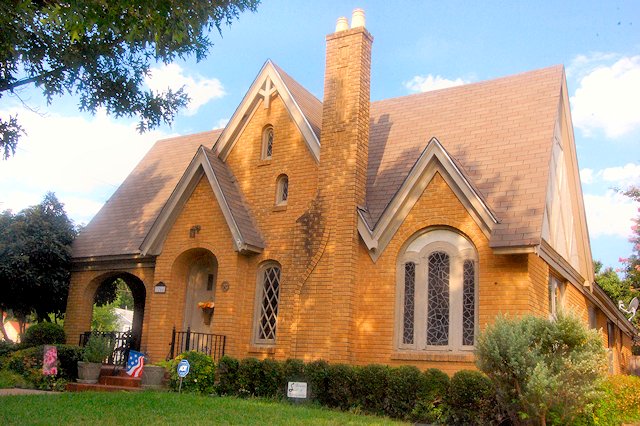
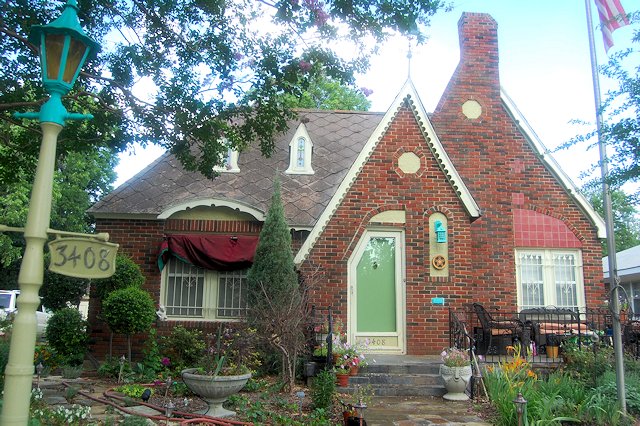
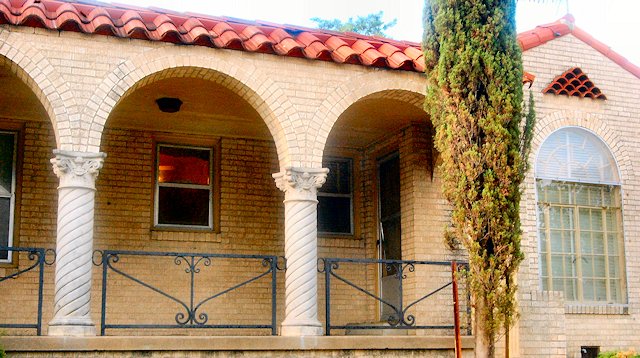 With an occasional arcade.
With an occasional arcade.
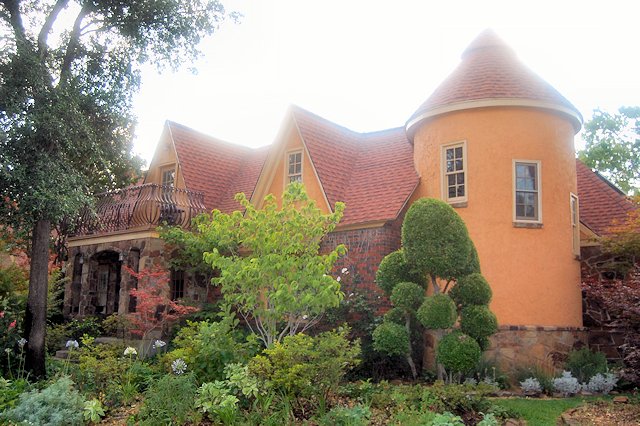 And here and there a turret.
And here and there a turret.
In the Hereafter
In 1916 Harden, then just thirty-three years old, began to think in terms of perpetual care. He developed his first cemetery.
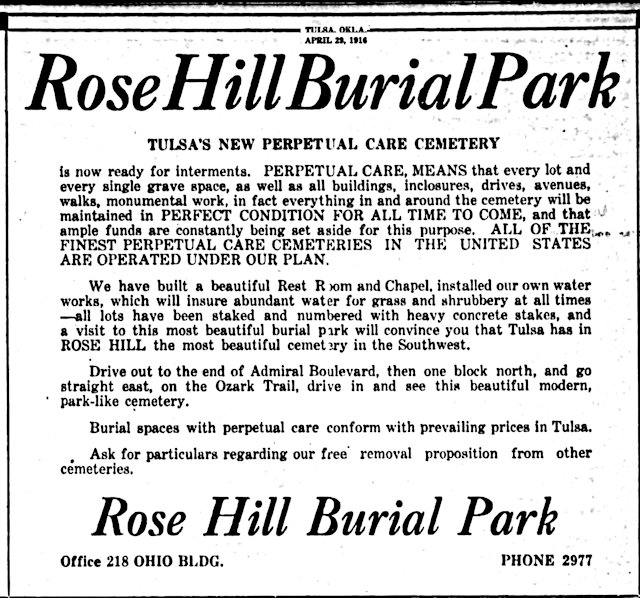 Rose Hill Burial Park opened in Tulsa.
Rose Hill Burial Park opened in Tulsa.
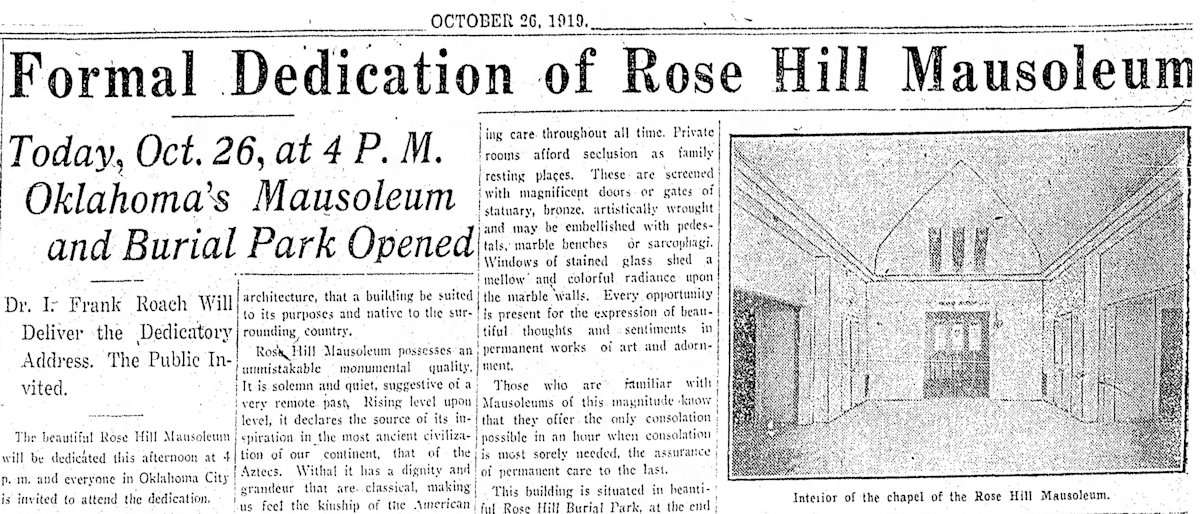 Three years later he opened Rose Hill Burial Park in Oklahoma City. The mausoleums of the two Oklahoma cemeteries were the first in the country built with colored marble, which Harden imported from France, Italy, Portugal, and Spain.
Three years later he opened Rose Hill Burial Park in Oklahoma City. The mausoleums of the two Oklahoma cemeteries were the first in the country built with colored marble, which Harden imported from France, Italy, Portugal, and Spain.
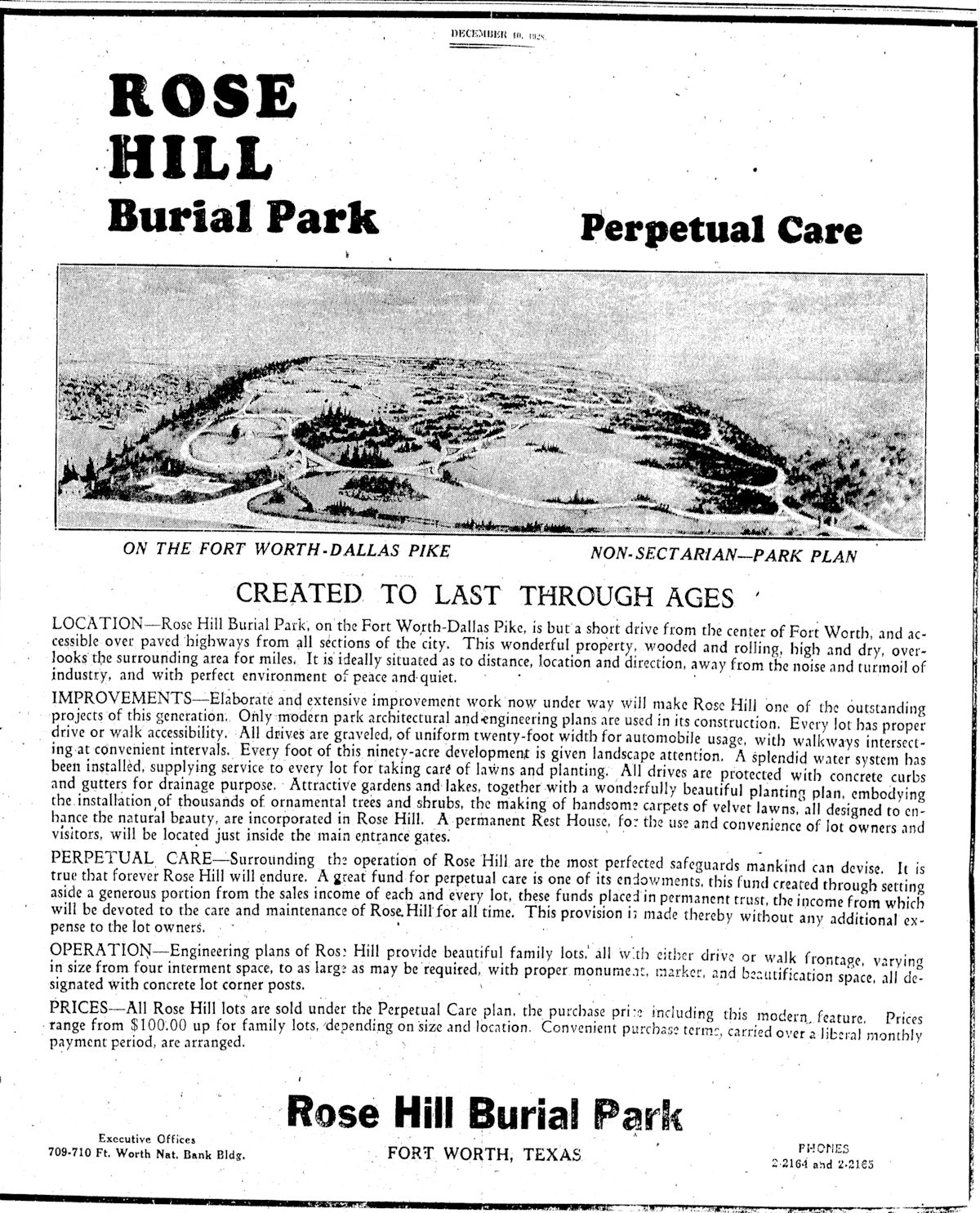 In 1928, while Harden was planning Bluebonnet Hills on the West Side, he opened Rose Hill Burial Park on the East Side. The property once had been part of a land grant awarded to the heirs of R. R. Ramey for his service in the Texas Revolution. The land later was owned by Major James Handley, for whom the town was named. He is buried in Rose Hill. Still later the land was owned by Paul Waples, who leased part of it to the Swift packing company.
In 1928, while Harden was planning Bluebonnet Hills on the West Side, he opened Rose Hill Burial Park on the East Side. The property once had been part of a land grant awarded to the heirs of R. R. Ramey for his service in the Texas Revolution. The land later was owned by Major James Handley, for whom the town was named. He is buried in Rose Hill. Still later the land was owned by Paul Waples, who leased part of it to the Swift packing company.
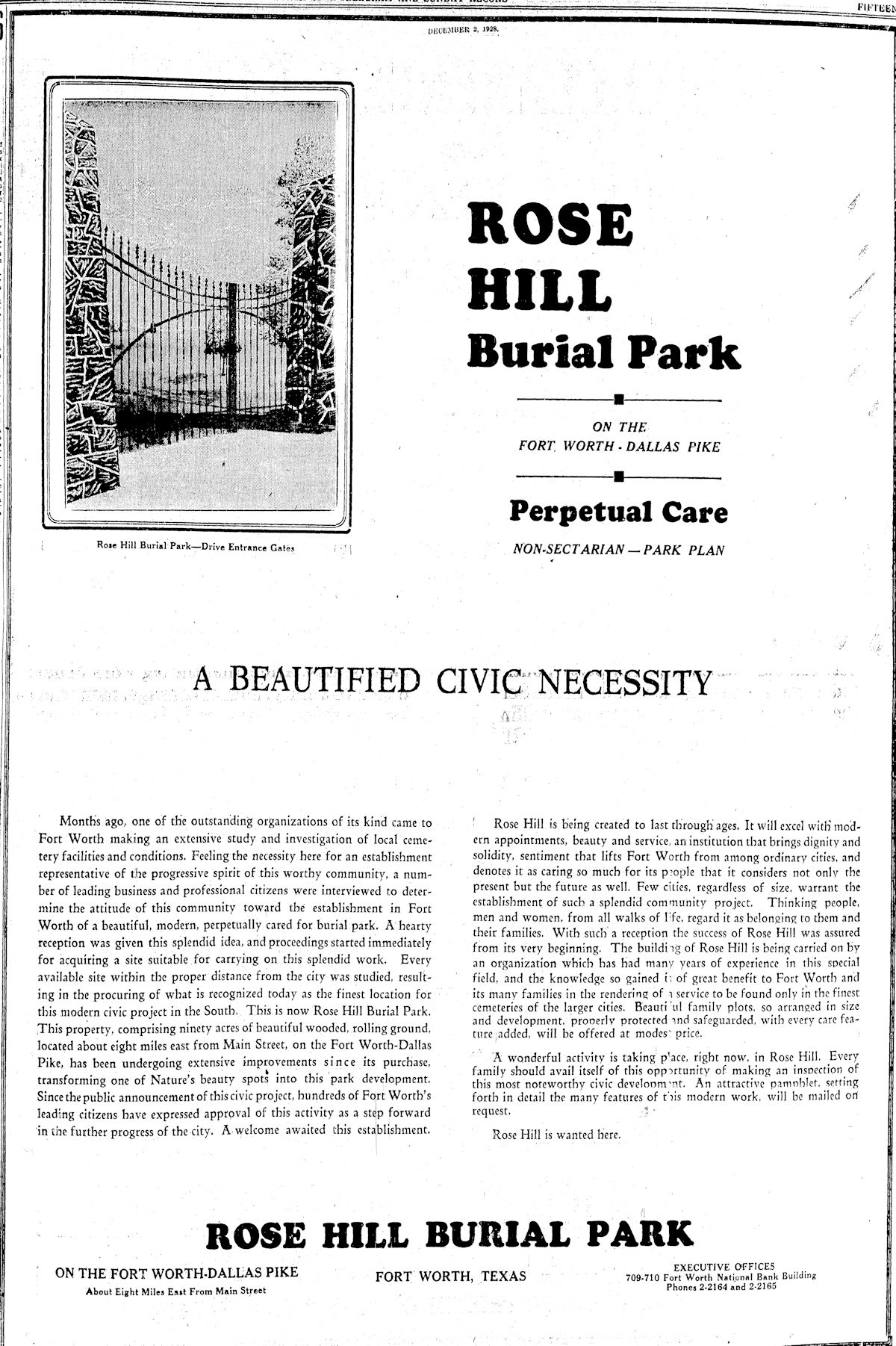 Word to the wise: If you value your sanity, do not read the block of ad copy. I got halfway through it and began to wish I were illiterate.
Word to the wise: If you value your sanity, do not read the block of ad copy. I got halfway through it and began to wish I were illiterate.
 The here-and-now and the hereafter: ads for Bluebonnet Hills and Rose Hill side by side in 1929.
The here-and-now and the hereafter: ads for Bluebonnet Hills and Rose Hill side by side in 1929.
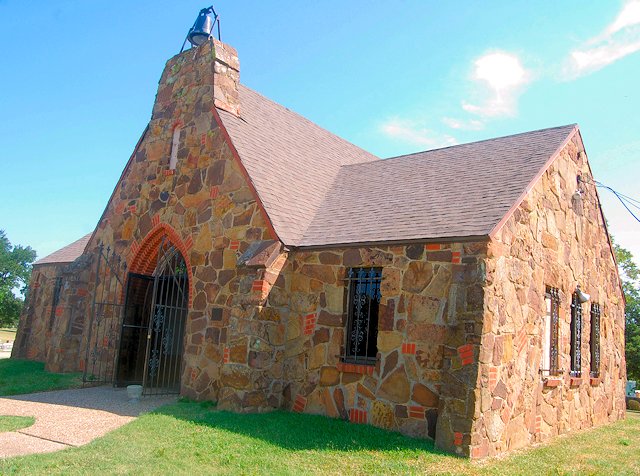
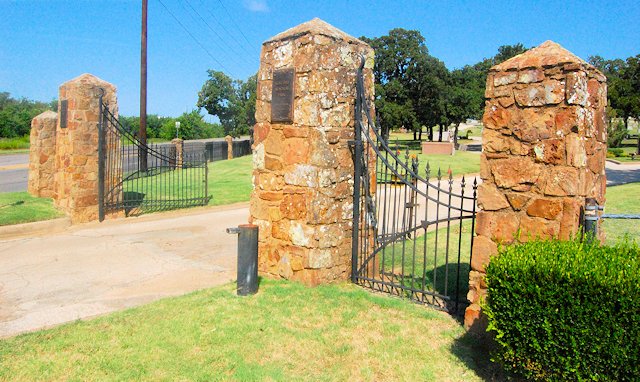 The sandstone used in the masonry of Rose Hill is similar to that found in nearby Top o’ Hill Terrace, the house and commercial building of gangster O. D. Stevens, and the estate of Paul Waples.
The sandstone used in the masonry of Rose Hill is similar to that found in nearby Top o’ Hill Terrace, the house and commercial building of gangster O. D. Stevens, and the estate of Paul Waples.
And, in Between, Some Fresh Veggies
Harden’s first public market building was built in his hometown of Oklahoma City.
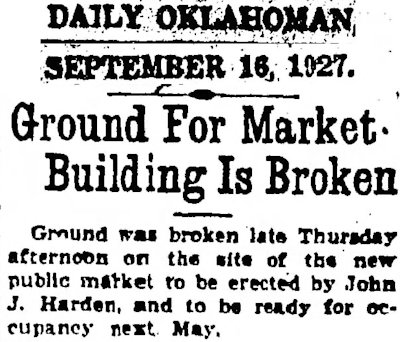 Ground was broken in September 1927.
Ground was broken in September 1927.
 The market, designed in Spanish mission style by Oklahoma City architect B. Gaylord Noftsger, opened in June 1928.
The market, designed in Spanish mission style by Oklahoma City architect B. Gaylord Noftsger, opened in June 1928.
One of Harden’s paving companies made the blocks used for the exterior of the building.
The Oklahoma City building has an auditorium on the second floor. Count Basie, Hank Williams Sr., and Bob Wills performed there.
In a controversial decision the city council granted Harden’s market a monopoly on the sale of fresh produce in the city.
 Noftsger also designed Harden’s public market building in Tulsa.
Noftsger also designed Harden’s public market building in Tulsa.
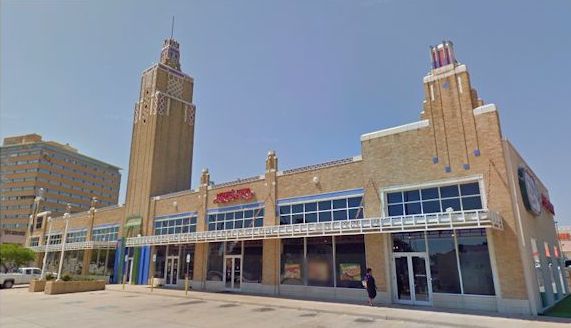 The Tulsa market opened in September 1930.
The Tulsa market opened in September 1930.

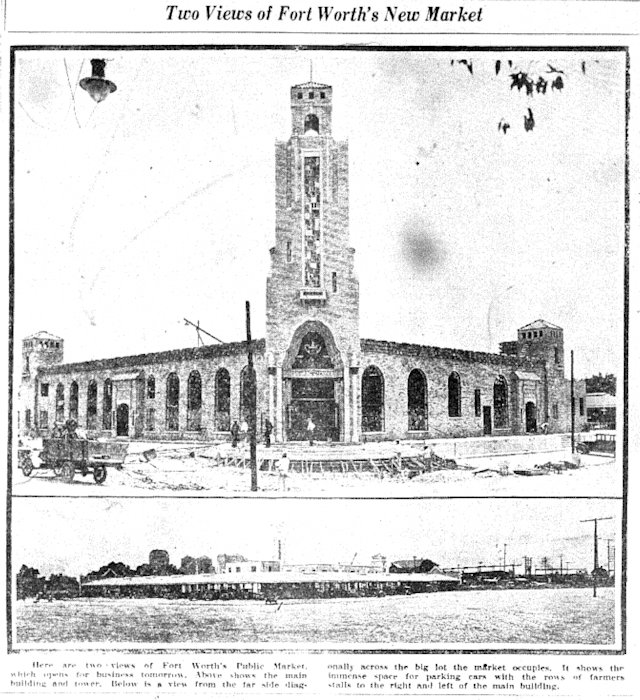
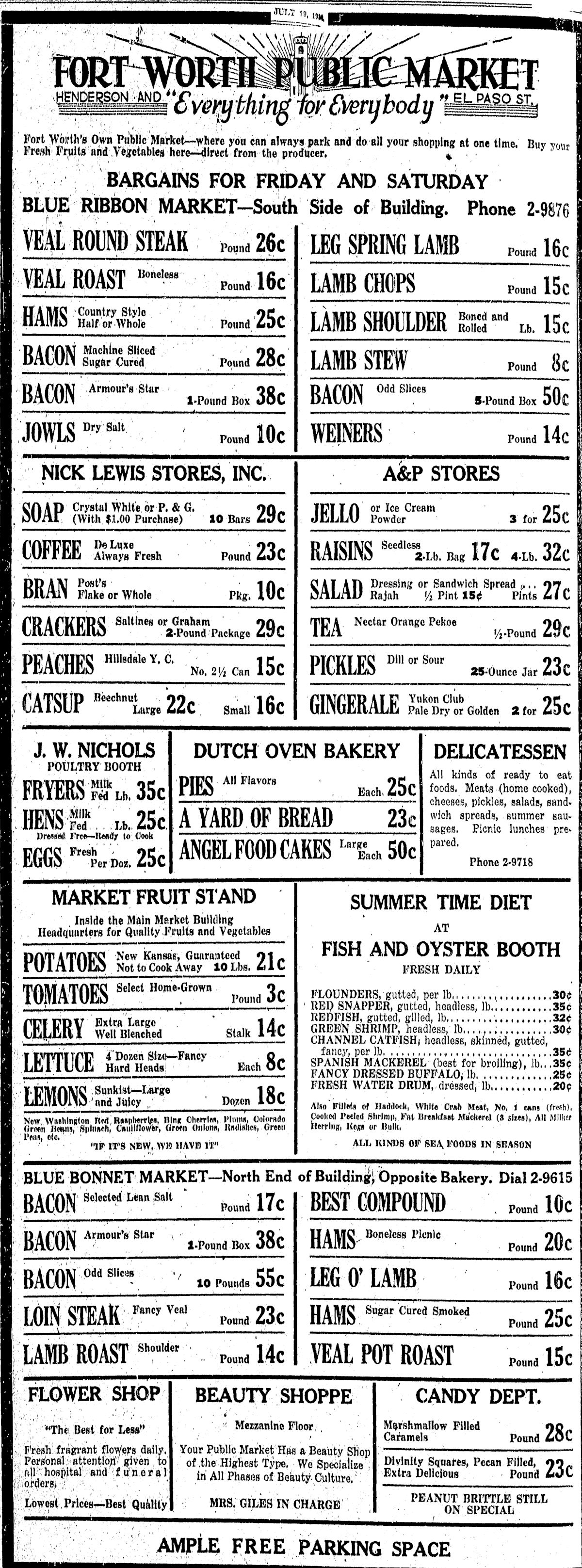 Construction of Fort Worth’s Public Market Building began in January 1930 and was completed in six months. It, too, was designed by Noftsger. The market opened June 20.
Construction of Fort Worth’s Public Market Building began in January 1930 and was completed in six months. It, too, was designed by Noftsger. The market opened June 20.
 The Star-Telegram in an editorial cautioned the Fort Worth city council against granting Harden a produce monopoly like the one granted him by Oklahoma City. Apparently Fort Worth did not grant such a monopoly. The editorial mentioned that Harden was also developing Bluebonnet Hills and Rose Hill.
The Star-Telegram in an editorial cautioned the Fort Worth city council against granting Harden a produce monopoly like the one granted him by Oklahoma City. Apparently Fort Worth did not grant such a monopoly. The editorial mentioned that Harden was also developing Bluebonnet Hills and Rose Hill.
All three Harden public market buildings still stand, although the fate of the Fort Worth building is uncertain, and only the front facade of the Tulsa building survives.
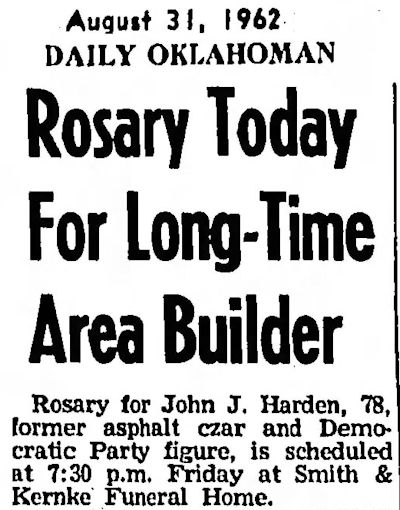 John James Harden died August 29, 1962.
John James Harden died August 29, 1962.
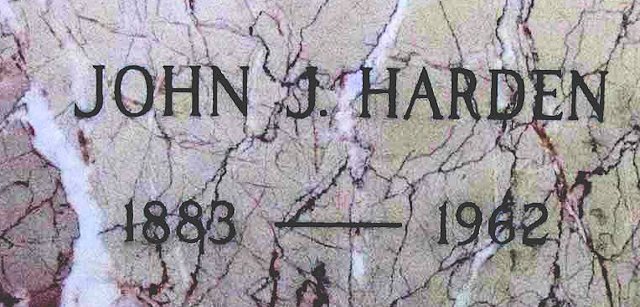 He is buried in Oklahoma City in the marble mausoleum of the first of his three Rose Hill cemeteries.
He is buried in Oklahoma City in the marble mausoleum of the first of his three Rose Hill cemeteries.





